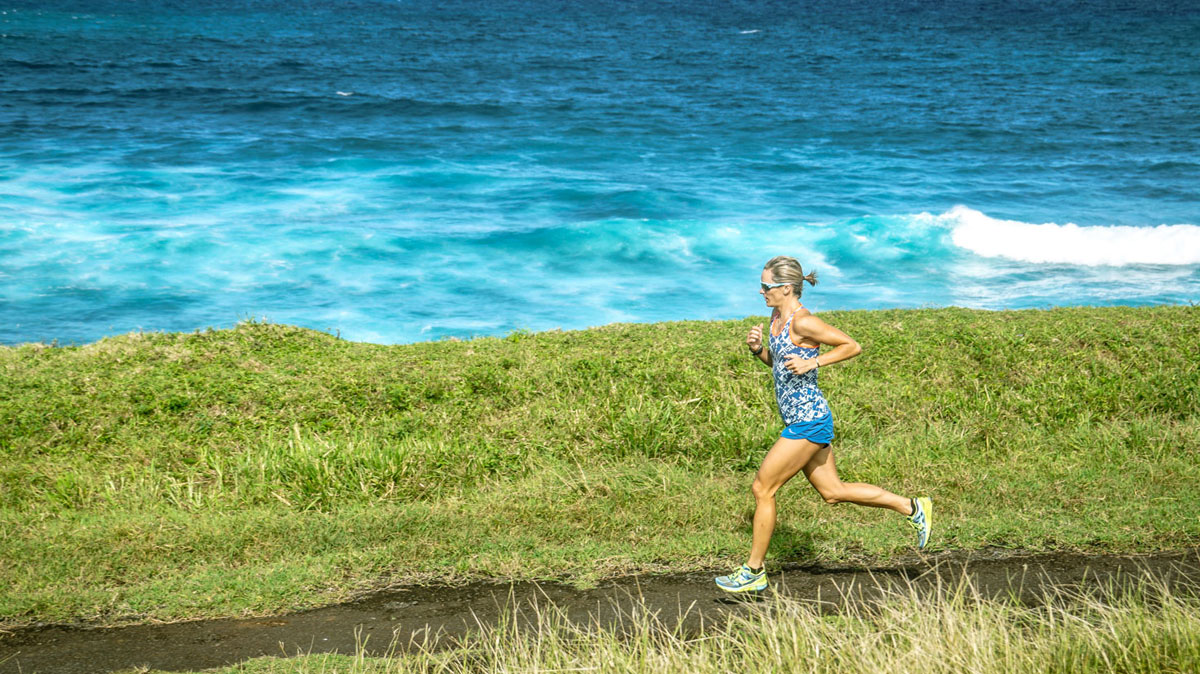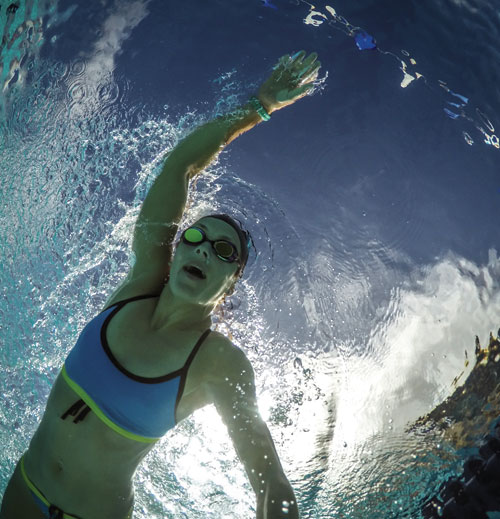- Editorial Offices
- 325 Brantly Hall
- Missoula, MT 59812
- (406) 243-2488
- themontanan@umontana.edu
- Icons By Maria Maldonado

 While some of the greatest athletes on Earth recently gathered in Rio de Janeiro for the Summer Olympics, another world-class athlete with strong ties to UM is preparing for her own shot at a world championship. As a student, Linsey Corbin began racing triathlons as a member of UM’s triathlon team. Now, 10 years later, she holds the Ironman American record, won nine races and finished on 29 podiums as a professional triathlete. (Just so you know, the Ironman consists of a 2.4-mile swim, a 112-mile bicycle ride and then ends with a marathon.) Corbin, who lives and trains in Bend, Oregon, talked with the Montanan about the upcoming world championships, returning from injury and what it takes to be a professional Ironman.
While some of the greatest athletes on Earth recently gathered in Rio de Janeiro for the Summer Olympics, another world-class athlete with strong ties to UM is preparing for her own shot at a world championship. As a student, Linsey Corbin began racing triathlons as a member of UM’s triathlon team. Now, 10 years later, she holds the Ironman American record, won nine races and finished on 29 podiums as a professional triathlete. (Just so you know, the Ironman consists of a 2.4-mile swim, a 112-mile bicycle ride and then ends with a marathon.) Corbin, who lives and trains in Bend, Oregon, talked with the Montanan about the upcoming world championships, returning from injury and what it takes to be a professional Ironman.
When, and how, did you make the decision that this was something you wanted to pursue professionally?
I was deciding my next move. I had been studying exercise physiology at UM and wasn’t really sure what I was going to do. A bunch of people from the health and human performance department were training to do the Ironman in Coeur d’Alene, Idaho, so I signed up. As I was preparing, I started following a training plan with the UM tri team and a couple of other people who were working at the University, and I got really fit for the Ironman and had a ton of success in the races leading up to it. Someone said, ‘Maybe you should race professionally,’ and I thought, ‘Why not?’ So I ended up not only racing my first Ironman in June of 2006 in Coeur d’Alene, but I also raced for the first time as a professional. I don’t think at the time I thought I would be racing professionally 10 years later; it was just kind of, ‘Let’s see what happens and go from there.’ I ended up qualifying for the world championships at Ironman Hawaii after that first race, and it kind of just snowballed from there. I told my husband now – boyfriend at the time – just give me a year, and if I don’t make a paycheck I’ll go get a job and we’ll figure it out.
Now, over 10 years later, you have obviously been making those paychecks. But last season, you dealt with some injuries and had to miss time. What was that experience like? I’ve had a few injuries before. Unfortunately that is part of the nature of the sport that no one told me about when I signed up. But last year was the first significant injury I had where I didn’t race basically the entire year. That definitely wasn’t something I was prepared for. It wasn’t a lot of fun, but I learned from it. When you win races, you don’t necessarily learn a lot from those experiences. It is obviously a lot of fun to win, but I think you learn more from the challenging and difficult times.
You have a couple world championships coming up. Is there a different mindset as you prepare for these types of big-time races? Yeah, definitely. The first world championship is coming up pretty quick. For that one, there is maybe not as much expectation or pressure because my specialty is more in the Ironman distance, and the one coming up is a half-Ironman. So maybe I don’t feel as much pressure for that one. I’m excited for both, but the big one is the Ironman Hawaii coming up in October. That’s the more famous race.
You are an American record-holder, and you have clocked the fifth-fastest time in the history of the sport. What is your goal for your upcoming races? My ultimate goal when racing is just to get the most out of myself. My most satisfying races are the races where I feel I left it all on the course and really tested my limits personally and physically, so that is kind of what my goal is. Obviously, my No. 1 goal is to win the race and get a world title, but you can’t really control what the competition is going to do.
What is a day like in the life of a professional triathlete? Most days I start with a 90-minute swim workout at 5:30 in the morning – usually we get in three to four miles. After that, I go to the gym and do some strength-training work, then I come home around 9 a.m. and have breakfast. Then at 10 a.m. I start a bike workout. It depends on the day of the week how far I ride. Sometimes I do three hours of intensity or sometimes I do a five-hour ride. Then in the afternoon I will go for a run.
You said that the full Ironman is more of your specialty. Is it also your favorite race, or can you have a favorite? The full Ironman is definitely my favorite distance to race. You obviously have to be very physically fit, but you also have to be mentally fit as well. It is kind of the combination: The best athlete wins on a spiritual, physical and mental level. I guess I just like the combination of challenges that Ironman provides, and I tend to do better the longer I go. I don’t need to go further though. There are double Ironmans, but I won’t do any of those. Ironman is plenty long for me.